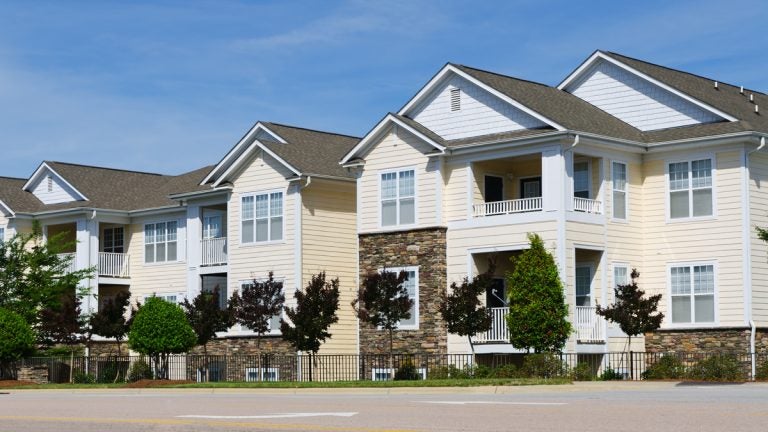Status of affordable housing rules in New Jersey

Thursday’s New Jersey Supreme Court ruling that struck down the state’s most recent affordable housing regulations also sent the Council on Affordable Housing back to the drawing board. The decision gives the council five months to come up with new quotas to ensure that towns and cities provide their fair share of low- and moderate-income housing.
The question now is whether the Christie administration will ignore the ruling or work with the Legislature to come up with new regulations.
But at least one state legislator who has tried to rewrite the COAH process is skeptical that will happen and said he is preparing to again push legislation to provide a system that would better meet the court’s mandate.
“It’s likely, quite frankly, that a COAH run by Gov. Christie is not going to come up with something that is constitutional,” said Sen. Raymond Lesniak (D-Union) and sponsor of a bill in the last legislative session that would have revamped the state’s affordable housing laws and abolished the council.
“He is going to have to accept the court ruling” and work with the Legislature on a bill he is willing to sign “or the court is going to make its own rules.”
A spokesman for Christie had no comment on the long-awaited ruling, which affirmed a nearly three-year old appellate decision invalidating COAH’s third round rules, and a spokeswoman for COAH did not return a request for comment.
“I think we have to go back to the drawing board and take a look at the legislation I sponsored that the governor vetoed and use that as a starting point to get something into law that abides by the constitution,” Lesniak said, adding he would work to improve his bill, which Christie sent back to the Legislature in January 2011 with a 49-page conditional veto message in which he called the COAH system “ineffective and burdensome.”
That bill originally had set up a growth-share system in which one of every 10 new housing units in larger developments would have to be designated for low- and moderate-income residents. But when amended and merged with an Assembly version, it required that 10 percent of all housing be affordable.
The court’s 3-2 decision states repeatedly that the old rules for determining housing obligation are not a “straitjacket” and the Legislature may write new laws to determine how affordable housing obligations are apportioned throughout municipalities. Still, that’s not what Fair Share Housing Center Associate Director Kevin Walsh is anticipating will happen.
“The Legislature gave it its best shot and Christie rejected it,” said Walsh, who argued the case before the court. “I don’t anticipate the Legislature doing anything, given its disagreement with Christie.”
Assembly Speaker Sheila Oliver (D-Essex} said the next move is Christie’s: “The Assembly expects the Christie administration to adhere to the state’s constitution and put forth a new affordable housing plan. Once it does, the Assembly will take a close look at it and decide how to proceed.”
Instead, Walsh sees COAH adopting new housing obligations using the methodology it had been using in the 1980s and ’90s “at most” in five months. (The Supreme Court gave COAH five months to use its former methodology to calculate new quotas for all towns.) He thinks municipalities will submit housing plans that incorporate those quotas to the state “within the next nine months to a year.”
The invalidated COAH growth-share rules — which had based municipal affordable housing requirements on future growth considering statewide need — predate Christie’s tenure. Still, the governor is no fan of COAH and Walsh cited him in a statement issued following the decision, stating, “The Christie Administration has done everything it can to delay and block Mount Laurel from promoting development of affordable housing in New Jersey. We now have a final decision and look forward to more homes in communities throughout the state.”
It was Fair Share’s second win in the Supreme Court in the past few months: In July, the court overturned Christie’s reorganization plan that had abolished the council and further stated that the governor does not have the power to reorganize any independent state agency.Yet that decision has not yet brought life to the moribund council, which has not met since the ruling. Christie had filed a reorganization plan disbanding COAH and transferring its duties to the state Department of Community Affairs, where it is considered and “in but not of” agency, in June 2011.
Although the Appellate Division of Superior Court rejected that reorganization in March 2012, COAH has met only twice in recent years: once in 2011 and then last May to start the process of taking as much as $164 million in unspent affordable housing trust funds from municipalities.
While the DCA website links include a COAH Staff Contacts page, there is no information about the council or any schedule of meetings. Walsh said he knows of no meetings scheduled. The appointments website of the governor’s office lists nine vacancies, of 12 spots, on the council and two of the three seated members have legislatively designated positions.
But in writing for the majority, Justice Jaynee LaVecchia agreed with the appellate division’s “quick deadline” for calculating new housing obligations based on the methods the council had used in the past because few units have been built during the past five years since the issue has been before the courts. According to the the ruling, as many as 60,000 new low- and moderate-income units were built in the state between 1985 and 2010 under COAH’s old methodology.
“Rules to govern the third round cannot wait further while time is lost during legislative deliberations on a new affordable-housing approach,” the opinion states. “A remedy must be put in place to eliminate the limbo in which municipalities, New Jersey citizens, developers, and affordable-housing interest groups have lived for too long.”
New housing obligations are some 14 years overdue. COAH initially was to have adopted municipal quotas when its so-called “second-round” numbers expired in 1999, but the council delayed until 2004. It finally adopted the new growth-share rules in 2008, but Fair Share Housing challenged those almost immediately and the appellate division twice overturned them. The Supreme Court agreed to take the case more than two years ago and heard oral arguments last November.
The court found that the growth-share methodology did not follow the state’s Fair Housing Act, and its own landmark Mount Laurel rulings, because it calculated low- and moderate-income housing needs on a statewide, rather than regional, basis and predicated future housing on future growth — meaning a community without growth would not need to provide any new affordable housing beyond its prior obligations.
That was very different than in the first two “rounds,” covering 1987-1999, when the council set housing quotas for each community so that it would provide its “fair share” of regional needs based on economic projections and its capacity to accommodate new units. COAH did not have the authority to stray so far from that original model, codified in the FHA.
Acknowledging “the political turmoil that has plagued voluntary compliance with the constitutional goal of advancing the delivery of affordable housing” the decision hints that a return to the old methodology should prompt lawmakers to act: “To the extent that this record reveals that most interested parties do not wish for that method to last for long, the remedy we impose today will incentivize prompt legislative attention to this subject.”Lesniak said he does not expect the Legislature to consider a new housing bill before the election in November because it is unlikely the houses will be in session.
And LaVecchia wrote that any new housing laws that may be enacted will still have to meet constitutional muster: “Although the Legislature may consider enacting an alternative form of remedy for the promotion of affordable housing in the housing regions of this state . . . enforcement of the constitutional obligation is still a matter that may be brought to the courts.”
The court’s opinion is likely to discourage lawmakers from trying to write better housing laws, wrote Justice Helen Hoens in a dissent.
“In the end, although my colleagues in the majority invite the Legislature to chart a new path, their conclusion that the Third Round Rules adopted by COAH are inconsistent with the dictates of the FHA, and their further directive that strict adherence to the methodology of the earlier rounds is the only permissible remedy, leave the Legislature with no guidance concerning what alternate statutory approach might comply with the majority’s interpretation of the Constitution,” Hoens wrote. “That lack of guidance, perhaps unintentionally, will greatly diminish the likelihood that the Legislature will attempt a future change of course.”
Hoens disagreed with the majority and stated that she believes COAH’s growth-share approach is consistent both with the FHA and the court’s Mount Laurel II decision.
Justice Anne Patterson joined in Hoens’ dissent. Justice Barry Albin and Judge Ariel Rodriguez, who is filling a vacancy on the court, joined LaVecchia’s majority opinion. Chief Justice Stuart Rabner and Judge Mary Catherine Cuff, also temporarily serving on the court, recused themselves.
With COAH and the question of citing affordable housing still controversial nearly 40 years after the court’s first Mount Laurel ruling, the case had drawn widespread interest from a host of groups on both sides of the issue. Among those who filed briefs were: The New Jersey State League of Municipalities, a number of individual towns, the New Jersey Builders Association, the New Jersey Chapter of the National Association of Industrial and Office Properties, the International Council of Shopping Centers, New Jersey Future, the Housing and Community Development Network of New Jersey, the American Civil Liberties Union, Catholic Charities, the New Jersey State Conference of the National Association for the Advancement of Colored People, and Latino Action Network.
“I’m happy that we are able to build more affordable homes for the poor and people with disabilities,” Mike McNeil, Housing Chair of the NJ NAACP said. “I’ve experienced housing discrimination myself which is why I got into this fight, so this victory is especially meaningful for me. The Court has responded to a broad coalition of partners committed to fair housing.”
Calling COAH’s last rules “unachievable and irrational,” Janice Mironov, mayor of East Windsor and president of the League of Municipalities, said she hopes the decision will lead to a change that will mean a better system for housing determinations.
“Today, the court’s decision underscores the need and presents the opportunity for the administration, the Legislature and municipal officials to partner and craft a reasonable, fair and achievable housing policy,” she said.
When new, solid rules are in place, municipal officials can begin to do the necessary planning for affordable housing that they have been hesitant to undertake during more than a decade of flux, said Charles Latini, president of the New Jersey chapter of the American Planning Association.
“This decision will allow New Jersey municipalities to move ahead with the critical mission of planning for and ensuring the construction of needed affordable homes,” Latini said. “It removes the confusion and uncertainty that has plagued COAH for 14 years.”
But Assemblyman Scott Rumana (R-Passaic) predicted the ruling will have the opposite effect.
“The Supreme Court has once again issued an irrational ruling with respect to housing development throughout our state,” he said. “I am disappointed by the court’s decision, which will place municipalities in legal limbo . . . By ruling against the ‘growth-share’ concept, the court has once again turned over the destinies of every municipality to the bureaucrats of the Council on Affordable Housing, exposing municipalities to evermore and massive high-density residential over-development.”
_______________________________________________________
NJ Spotlight, an independent online news service on issues critical to New Jersey, makes its in-depth reporting available to NewsWorks.
WHYY is your source for fact-based, in-depth journalism and information. As a nonprofit organization, we rely on financial support from readers like you. Please give today.




